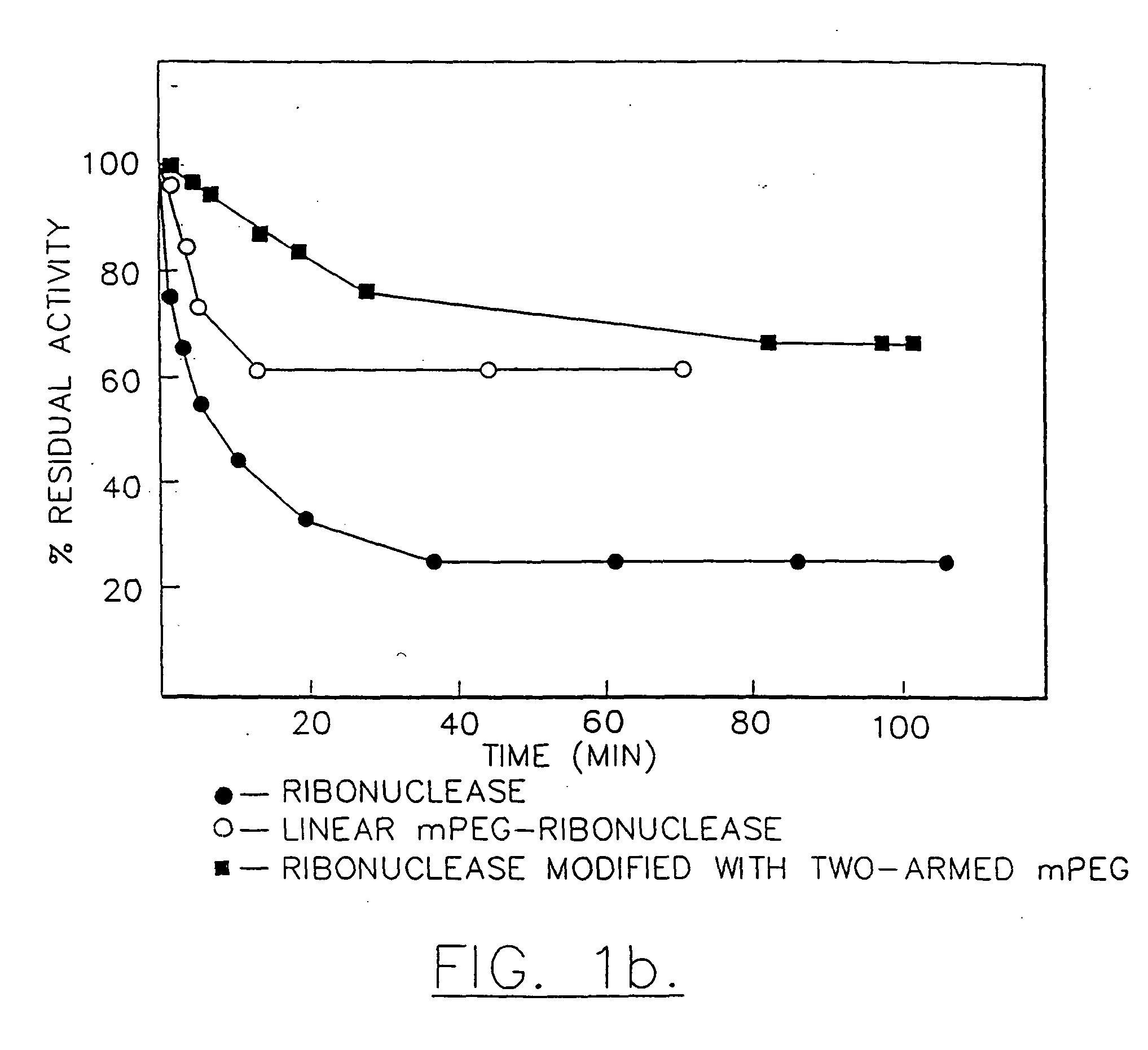Purified polymers for modification of surfaces and molecules
a technology of surface and molecule, applied in the field of monofunctional derivatives of poly (ethylene gly), can solve the problems of protein immunological problems, limited use of these compounds, and enzymes that exhibit specific biocatalytic activity are sometimes less useful than they otherwise, and achieve enhanced selectivity of attachment, simple and straightforward preparation, and purification
- Summary
- Abstract
- Description
- Claims
- Application Information
AI Technical Summary
Benefits of technology
Problems solved by technology
Method used
Image
Examples
Embodiment Construction
[0052] I. Preparation of a Hydrolytically Stable mPEG-Disubstituted Lysine.
[0053] Two procedures are described for the preparation of a hydrolytically stable, two-armed, mPEG-disubstituted lysine. The first procedure is a two step procedure, meaning that the lysine is substituted with each of the two mPEG moieties in separate reaction steps. Monomethoxy-poly(ethylene glycol) arms of different lengths or of the same length can be substituted onto the lysine molecule, if desired, using the two step procedure. The second procedure is a one step procedure in which the lysine molecule is substituted with each of the two mPEG moieties in a single reaction step. The one step procedure is suitable for preparing mPEG-disubstituted lysine having mPEG moieties of the same length.
[0054] Unlike prior multisubstituted structures, no aromatic ring is present in the linkage joining the nonpeptidic polymer arms produced by either the one or two step methods described below that could result in tox...
PUM
| Property | Measurement | Unit |
|---|---|---|
| molecular weight | aaaaa | aaaaa |
| molecular weight | aaaaa | aaaaa |
| pH | aaaaa | aaaaa |
Abstract
Description
Claims
Application Information
 Login to View More
Login to View More - R&D
- Intellectual Property
- Life Sciences
- Materials
- Tech Scout
- Unparalleled Data Quality
- Higher Quality Content
- 60% Fewer Hallucinations
Browse by: Latest US Patents, China's latest patents, Technical Efficacy Thesaurus, Application Domain, Technology Topic, Popular Technical Reports.
© 2025 PatSnap. All rights reserved.Legal|Privacy policy|Modern Slavery Act Transparency Statement|Sitemap|About US| Contact US: help@patsnap.com



